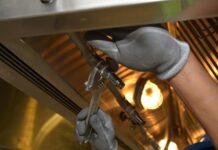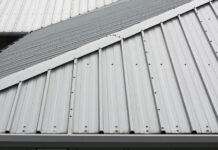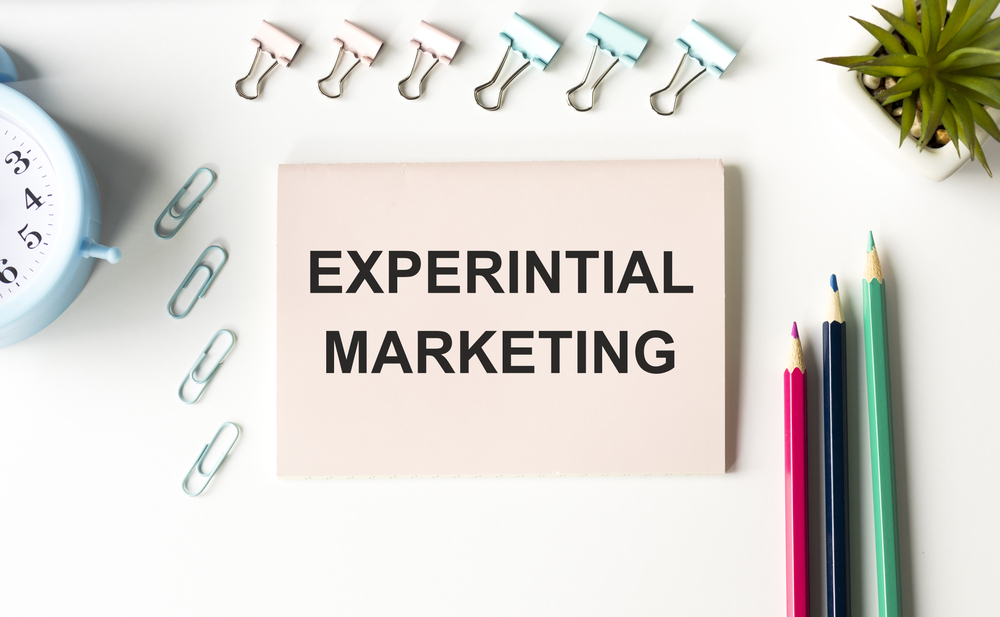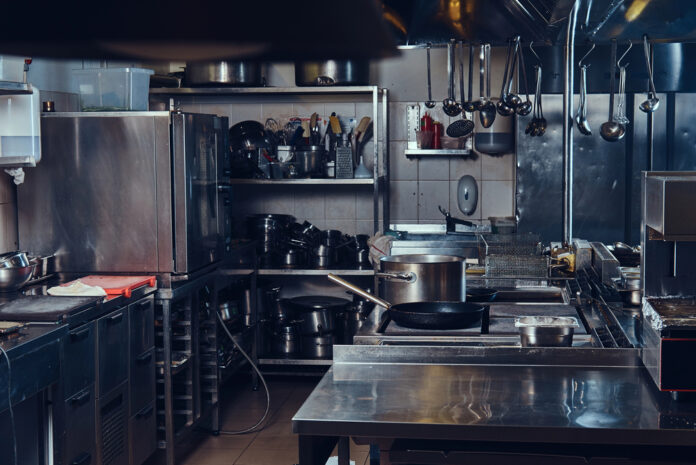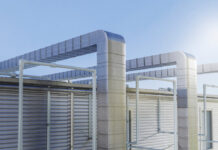Moving a restaurant is a whole different challenge from moving an apartment. You’re working with heavy-duty ovens, high-end espresso machines, and refrigeration systems that need to stay running – not sitting unplugged for hours.
Here’s the upside: moving your restaurant isn’t just a hassle – it’s a fresh start. It’s your chance to tweak your setup, improve flow, and prepare for bigger things ahead. The key? Working with restaurant equipment movers who know your walk-in cooler isn’t just a hunk of metal – it’s what keeps your business alive.
Smart planning that starts weeks before moving day makes all the difference between a smooth transition and unnecessary headaches.
Restaurant Equipment Move Planning: 6–8 Weeks Out
Here’s where most people mess up – they think moving is just about the actual moving day. Wrong. The real work happens weeks before the truck shows up.
You need to get three things perfectly aligned: your team, your equipment, and your paperwork. Over the next few weeks, you’ll map out what you own, what each piece needs to function, and exactly how it’ll be reinstalled.
Build Your Restaurant Equipment Inventory
Create one master document that becomes your bible. For every single item – from your main line equipment down to that temperamental espresso machine – you need model numbers, serial numbers, dimensions, weight, current condition, and a photo. Don’t forget the technical stuff: gas requirements, electrical specs, water connections, and ventilation needs.
Here’s the smart part: save everything in a shared folder with your floor plans, certificates of insurance, permit details, and any building forms you’ll need. When everyone’s working from the same playbook, there’s no confusion about routes, no surprises about utility requirements, and no last-minute scrambling for approvals.
Decide What’s Worth Moving
Now for some tough love: not everything in your current kitchen deserves a spot in your new one. Walk through and flag anything that’s a lease return, mark equipment that needs repairs before the move, and honestly assess what should be sold or donated.
Every piece you eliminate means less handling, less staging space, and faster installation. Plus, your reopening timeline stays realistic instead of optimistic.
Restaurant Move Coordination & Access: 4–6 Weeks Out
Think of this phase as air traffic control for your kitchen. You’re orchestrating movers, building teams, and trades so everyone knows exactly where to be and when. Get this wrong, and you’ll have expensive equipment sitting in a hallway while someone tries to figure out who has the freight elevator key.
Hire Experienced Commercial Movers
This isn’t the time to go with the cheapest bid. You need movers who’ve handled commercial kitchens before – people who know the difference between a combi oven and a convection oven, and why that matters.
Look for documented restaurant projects, proper licensing, solid insurance, and references you can actually call. A company like White Glove Moving & Storage, with three decades of restaurant moves under its belt, knows how to coordinate certificates of insurance, reserve freight elevators, map the most efficient routes, and custom-crate your most sensitive equipment. They’ll protect your floors, label everything by zone and utility type, and set equipment level so your trades can hook things up immediately.
Plan Equipment Routes and Building Access
Walk the path your equipment will take at both locations – not just once, but twice. Measure doorways, check corridor turns, note elevator weight limits, and always have a backup route for oversized pieces. That massive pizza oven might fit through the main entrance, but what if the delivery truck can’t get close enough?
Reserve freight elevators and loading zones well in advance. Get your certificates of insurance to building management early, and confirm any special delivery windows or restrictions. You’d be amazed at how many moves get delayed because someone forgot to mention that the building doesn’t allow deliveries after 4 PM.
Set Clear Restaurant Move Communication
Create a simple move brief with key contacts, building information, access details, and the sequence for arrivals. Most importantly, decide who can make real-time decisions about routing or timing changes. When you’re dealing with a narrow stairwell and an oversized refrigerator, you don’t want movers waiting around for committee approval.
Restaurant Equipment Preparation: 2–3 Weeks Before Move
Now you’re shifting into kitchen prep mode. Your goal is straightforward: equipment that’s clean, properly powered down, and ready to reconnect quickly at the new location.
Deep Clean and Power Down Restaurant Equipment
Bring every piece up to health code standards – this isn’t optional. Empty and sanitize all refrigeration units, then let them dry completely to prevent odors or moisture problems during transport.
Here’s where timing gets tricky: equipment needs different power-down schedules. Ice makers, steamers, combi ovens, and dish machines often need 24-48 hours to properly cool, defrost, drain, and dry. Plan this window to align with your final service and the loading schedule.
Coordinate Licensed Utility Disconnections
You’ll need qualified professionals to handle gas, electrical, water, and any hood or fire-suppression disconnections – local codes don’t mess around with this stuff. Time the shutoffs as close to loading as possible, and confirm that utilities at your new location will be ready for immediate reconnection.
Secure Restaurant Equipment for Transport
Follow manufacturer guidelines to stabilize moving parts and protect delicate surfaces. Remove and bag up all the small stuff – racks, trays, knobs, panels, cords, hoses, filters, nozzles. Label everything clearly and keep these parts with their parent equipment. You don’t want to be hunting for a crucial component when you’re trying to get back up and running.
Professional Packing for Restaurant Equipment: 1 Week Out
This is where experienced movers earn their keep. They’re not just wrapping things in blankets and hoping for the best – they’re engineering protection for each specific piece of equipment.
Tailored Protection for Each Unit
Professional movers understand that protecting a range is different from protecting a refrigerator or a POS system. They use proper internal blocking, padded contact points, and secure closures to prevent any movement during transport.
Everything gets labeled to match your floor plan with clear zone codes and utility requirements. Priority items get tagged as “Set First” so they can go directly into the final position for immediate hookup.
Custom Crating for High-Value Items
Oversized or expensive equipment gets the full treatment – custom crates with internal bracing that support the unit’s frame and distribute weight properly. Delicate electronics are wrapped and cushioned with materials specifically chosen to reduce vibration and protect displays and controls.
Restaurant Move Day: Making It Happen
All that planning pays off when professional movers turn your carefully laid plans into smooth execution.
Strategic Loading and Transport
Experienced crews don’t just load randomly – they stage and load in deliberate order. Non-essentials go first, then prep equipment, then cookline equipment, with refrigeration loaded last so it can be unloaded and set first at your new location. They coordinate dock access and freight elevator timing to keep everything moving.
During transport, equipment is secured with purpose-built strapping and blocking, with proper spacing to protect sensitive units from vibration and impact.
Building Protection During a Restaurant Move
From the first piece lifted to the last one placed, good movers protect floors, corners, and doorways with runners and guards. They establish clear travel paths and coordinate with building teams to meet delivery windows and noise restrictions while maintaining steady progress.
Precise Installation of Commercial Kitchen Equipment
At your new location, the team follows your zone-based placement plan. “Set First” items – usually refrigeration and line equipment—go directly into final positions for immediate connections. Each unit gets leveled to manufacturer specifications with proper clearances for ventilation and service access.
Quality Control and Trade Handoff
Before anyone starts hooking things up, crews verify everything against load maps, check shock and tilt indicators, and flag anything that needs inspection. After placement, they clear debris, walk through everything with your team, and document equipment status and serial numbers. This creates a clean handoff to your licensed trades for final gas, electrical, water, and hood connections.
Back in Restaurant Business Without the Chaos
Here’s what happens when you work with pros who know restaurant moves: instead of the usual moving day disaster, you get something that actually runs smoothly. They set your refrigeration first, get your cookline equipment perfectly level, and have utilities ready to connect the second everything’s positioned.
No more wandering around trying to figure out where that prep table was supposed to go. Smart labeling means your range, reach-ins, and registers end up exactly where they belong. You’re back to serving customers instead of playing kitchen Tetris with misplaced equipment.
Frequently Asked Questions About Restaurant Equipment Moves
1. Can restaurant moves happen overnight or on weekends?
Absolutely. Many movers actually prefer off-hours scheduling to minimize business disruption. You’ll need to coordinate after-hours building access and make sure your trades can work those hours too, but it’s often the smoothest way to handle the transition.
2. Can movers store restaurant equipment temporarily?
Yes, and sometimes it’s your best option. Reputable movers offer both short and long-term storage in clean, monitored facilities. This is particularly helpful when your new space isn’t quite ready or you’re coordinating with a remodel timeline.
3. How long does a typical restaurant move take?
Most small to mid-size restaurants complete their moves within one to two days, depending on equipment volume, distance, and site access challenges. Larger kitchens or multi-floor moves may take longer, especially when permits or specialized handling are involved.
4. Can restaurant equipment moves include new installations or remodels?
Definitely, many owners use relocation as an opportunity for kitchen redesigns or equipment upgrades. Experienced movers can work alongside contractors to stage new equipment, position everything properly, or temporarily store items until installation day.
5. Can movers handle long-distance restaurant relocations?
Absolutely. Movers with national networks can handle cross-state permits, customs paperwork for international moves, and specialized crating for longer transport. The logistics get more complex, but it’s definitely doable – just make sure you find someone who’s actually done long-distance restaurant moves, not just regular long-distance moves.
Find a Home-Based Business to Start-Up >>> Hundreds of Business Listings.

